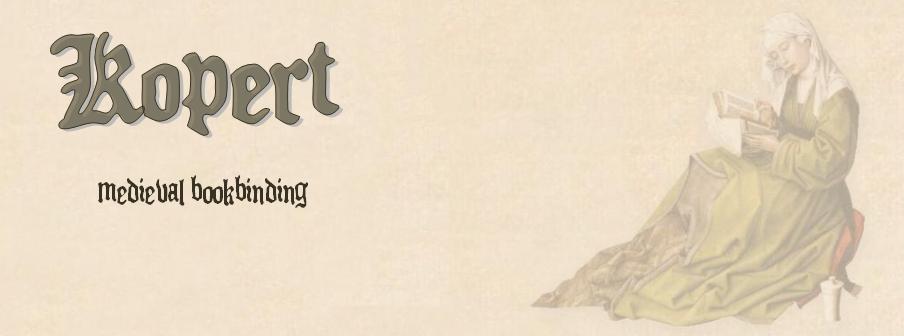As there is always some spare time while the book sits in the press and you have to wait for the glue to dry, I normally work on two or three books in turns.
 This time, I worked on a small Rechenbuch I already mentioned in an older post and on a small girdle book.
This time, I worked on a small Rechenbuch I already mentioned in an older post and on a small girdle book. Besides rather plain prayer books for the lower clergy and merchants account books this type of binding was also in use in a more elaborate form for Books of Hours for well-to-do persons.
And this is what I'm working on at the moment - instead of a plain leather cover the girdle book will be bound in lovely fabric such as silk velvet or multicoloured damast silk (I haven't decided yet...).
 The inner construction of the book is no different from that on a "normal" medieval one without the cover extentions. In fact a lot of girdle books were nothing more than a standart binding with leather covered boards and had an additional cover with extentions over the first one! Ecspecially for girdle books with a delicate textile cover this is very useful - if the textile fades or wears out, there still is the sturdy leather cover underneath to protect the book.
The inner construction of the book is no different from that on a "normal" medieval one without the cover extentions. In fact a lot of girdle books were nothing more than a standart binding with leather covered boards and had an additional cover with extentions over the first one! Ecspecially for girdle books with a delicate textile cover this is very useful - if the textile fades or wears out, there still is the sturdy leather cover underneath to protect the book. So I'm going to make a little leather bound book with some blind tooled decoration and then cover it with nice fabric so that nobody is ever going to see the decorated leather cover :-) Sounds a bit silly, but hey, this is what they did...
You can see the inner cover with decoration on the girdle book to the right - the open flap to show whats under the outer cover is a modern addition...
This is me, taking a sip (it was really hot on sunday with the sun shining into the market stall / workshop) while sewing on the headbands. The sections (folded pages stacked into each other) are already sewn to the cords, the cords ends are pasted to the boards and the spine got its first layer of glue...
I'll show you all the dirty details in part 2 :-)


hello there :)
ReplyDeleteyour stall looked beautifull! i particularly love the block printed fabric behind you. Did you make that yourself? What paint did you use?
*blush* Thanks :-)
ReplyDeleteNo, I didn't print the fabric, I just bought it this way. I's handwoven linnen and quite old... Its most probably from switzerland, where they had a block printing tradition in folk art. In historism in the 19th century they began to use medieval motives again, so I was just lucky to get one of these :-)